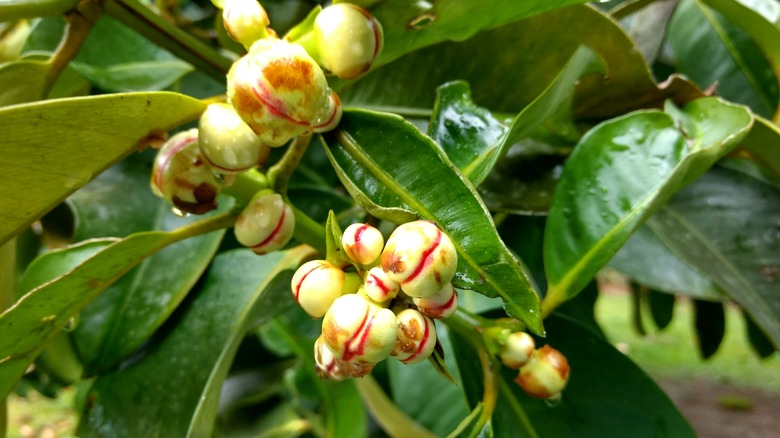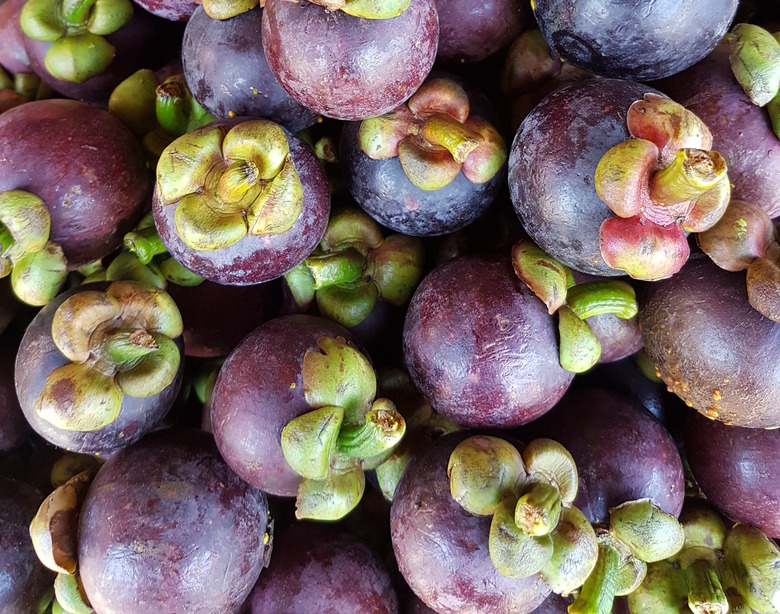How To Care For A Mangosteen Plant
Mangosteen is famously difficult to grow outside of its native habitats, which include the rainforests of Malaysia and Indonesia.
However, the mangosteen fruit is legendary for its flavor, being called by some the best-tasting fruit in the world. A passion for mangosteen among food aficionados is articulated by National Geographic, which calls the fruit "the most exquisite fruit of the tropics," an opinion the magazine states goes back centuries among royalty, explorers and just about everybody who has ever tasted it.
If you yearn for a mangosteen fruit tree (Garcinia mangostana) in your yard, you had better live in Hawaii or the warmest parts of South Florida, as this tree grows only in USDA hardiness zones 11 and 12. Against all odds, here's what it might take to nurture and cultivate a mangosteen.
About the Mangosteen Tree
The very slow-growing mangosteen is an evergreen tree with an erect habit that can eventually reach from 20 to 80 feet tall with a spread of 30 to 40 feet. It is commonly known as purple mangosteen and "queen of fruit."
The tropical fruits are about the size of an average orange at 4 inches in diameter, with thick rinds that become purple when the fruit is mature.
When peeled, the pearly white sections are variously described as a complex acidic and sweet mixture of mango, strawberry, peaches and lychees, according to GLOBALG.A.P., an international produce-certification board based in Germany.
Mangosteens are commercially grown primarily in Thailand, which is the largest producer worldwide, along with Vietnam, Malaysia and Indonesia. Some production also occurs in Central America.
It requires a warm and humid climate with even rainfall and a clear three-to-five-week dry season.
Growing Mangosteen Trees
Finding a mangosteen seedling or tree from a nursery could pose a quest, but some tropical fruit tree nurseries in Hawaii and Florida may stock them or be able to find them, although you will probably have to do some homework.
Some available trees may be grafted, while some might be growing on their own rootstock. Usually, grafted trees flower earlier, but the fruits are smaller, so most trees available commercially are not grafted.
There are no known commercial plantings of mangosteen in the U.S.
Planting and Care
Young saplings need shade, but as they grow, the trees need some sun. So a location with partial shade might be best while protecting younger trees with shade cloth if possible—think rainforest conditions. Locations in full sun will not be successful.
Mangosteens require deep and well-draining soil with high organic matter content. In the wild, these trees grow on deep river loams. If your soil is on the sandy side, amend it with peat moss and lots of rich compost, or remove your native soil completely and replace it with a richer mixture.
Water is key. Irrigate twice weekly, ensuring that the soil never dries out, but avoid waterlogged soil, which can damage the roots.
After planting and until the trees are about three years old, fertilize with a **balanced fertilizer three or four times a year.** After that, once or twice a year is enough.
Warning
Mangosteens take roughly 8 to 12 years before they begin fruiting.
Fruit and Harvest
Get ready for a wait because mangosteens typically take their time before fruiting, usually when they are 8 to 12 years old. The flowers appear at the tip of a shoot, usually after a dry spell.
Fruit is ready to harvest about 100 to 120 days after flowering, depending on environmental conditions.

